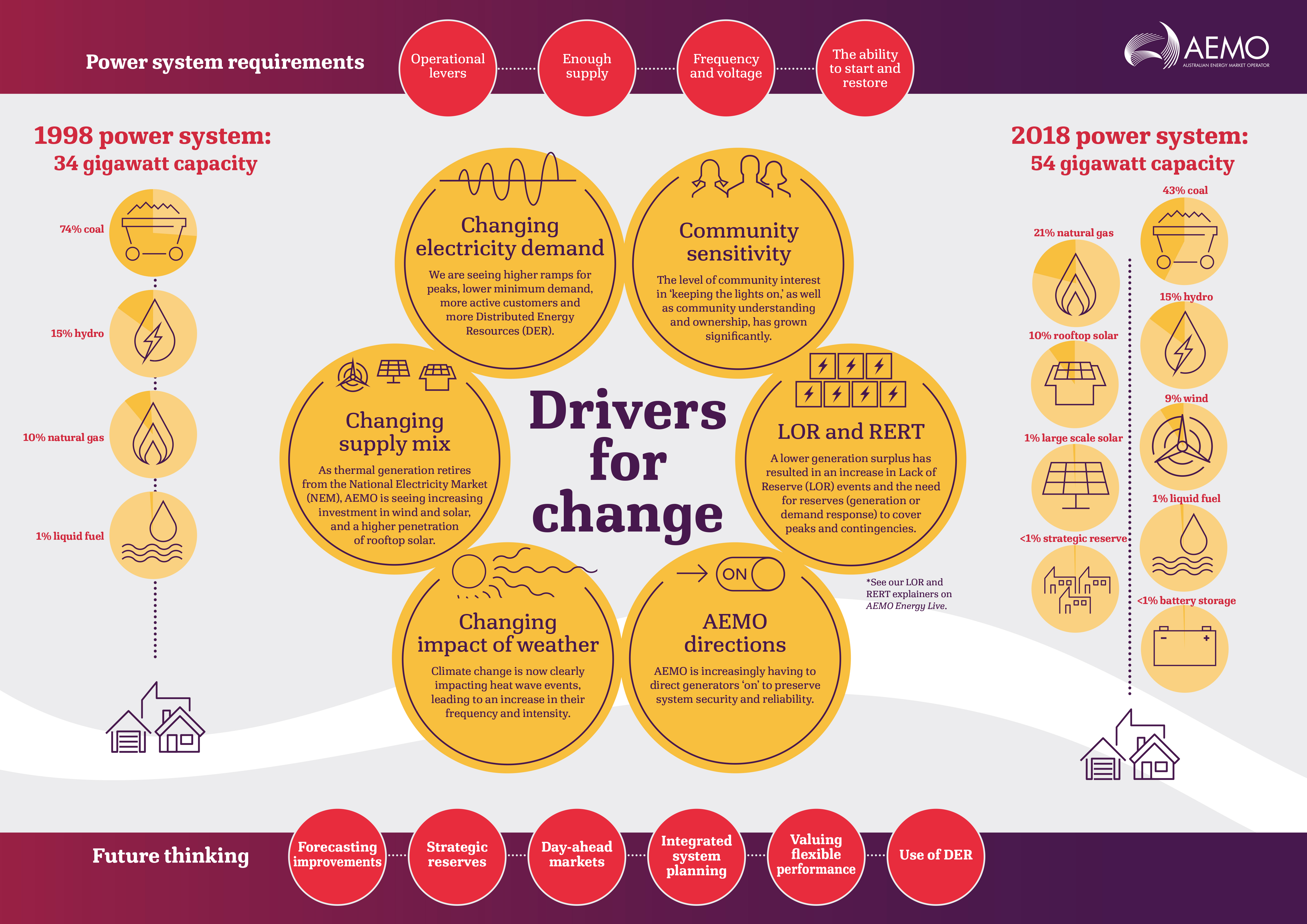While power systems and energy markets around the world are gearing up to face the challenges of the future, for AEMO and the broader energy industry in Australia, these challenges are in the here and now. Particularly in the National Electricity Market (NEM) that covers our eastern and south-eastern states, the energy transition is well underway and delivering tangible impacts.
In March, AEMO published an analysis of the reliability and security challenges confronting us in the NEM and some steps forward for addressing them.
First, the NEM is facing an unprecedented replacement of the generation fleet. We are seeing supply resources shifting away from coal generation towards a diversity of firm, intermittent and peaking generation, both large-scale and at the residential level, as well as demand resources. And this trend is not showing signs of slowing down any time soon.
Second, the impact of weather on the secure operations of the power system has never been more pronounced. We are experiencing rapid fluctuations in temperature and more extreme weather events, and they are making both demand and supply more variable. With the Bureau of Meteorology projecting more frequent and hotter extreme heat days for the next decade, it would be reckless for AEMO not to plan for worst-case scenarios.
It is pleasing to see the Australian community being more involved than ever, interested and educated in energy conversation. They are no longer passive consumers of energy, embracing the choices presented to them, whether it is through the installation of solar and battery storage or actively using information portals to help improve their energy efficiency and reducing energy bills.
One in four Australian homes have solar panels installed. This increased penetration of rooftop solar has changed the way the system operates. Low grid demand in the middle of the day leads to a larger ramp to the evening peak as the sun sets. For AEMO, the rapid ramp up in grid demand will require resources that respond quickly for a relatively short duration – resources we currently do not have available. This requires us to consider now whether aspects of our market and regulatory arrangements continue to be fit for purpose, and how do we best reflect the dynamic and evolving needs of energy customers.
Managing security and reliability in a transforming power system requires focus on three core areas: adequacy, reliability and security, and enabling additional and new investment. Unfortunately, we not only lack the volume of flexible, dispatchable resources to maintain supply reliability, we also lack a good pricing mechanism that values these resources. And despite all efforts made to provide clear market signals, the NEM is not seeing enough investment in flexible dispatchable resources to maintain the level of supply reliability consumers expect as we transition from traditional to variable energy generation resources.
Careful planning is required as the opposite scenario is an erosion of investment within the market, leading to the scenario we face today. There are a number of potential avenues to address these challenges.
Some of the observations we shared in our March report include the conclusion that the NEM must not only have the volume of these resources, but it must also have the types of resources that are flexible, predictable and dispatchable. Frankly, we just cannot afford to continue to live without a good pricing mechanism for flexible resources.
In this changing context, AEMO considers that a more encompassing and holistic view of the needs of the future framework should be taken, and would like to work with our other Energy Security Board colleagues and stakeholders to carefully consider a number of potential reforms.
We urge for the consideration of an operational reliability standard beyond the existing Reliability Standard, which factors in a level of reserve to manage power system reliability during extreme conditions. In simple terms, we need to factor in a resource buffer as part of our ongoing planning of the system.
Additional to this buffer, AEMO believes there should be an allocation of strategic reserves that sit outside the market, reserves that respond quickly and are available when we need them should a gap in supply and demand arise. These reserves should be procured in the most efficient manner possible to reduce costs to consumers.
Improved market mechanisms to value and pay for reliability and flexibility are essential to reduce the likelihood of imposing unnecessary constraints on new investments and/or be forced, as market operator, to intervene in the market when that should not be necessary.
The energy industry is facing some unprecedented challenges, but from our conversations with stakeholders at all levels throughout the industry, we have confidence that this dynamic sector is willing to evolve.
The path forward may not always be clear, but the destination is very clear – an affordable, secure, reliable and low-emissions energy future for all Australians.
Joe Adamo
Executive General Manager, Public Affairs, AEMO







